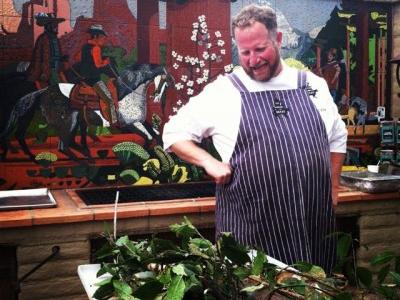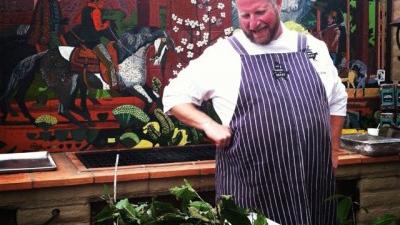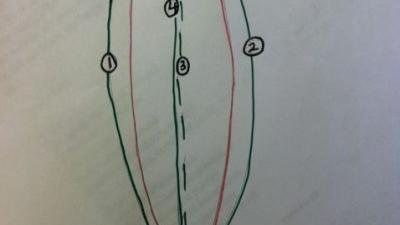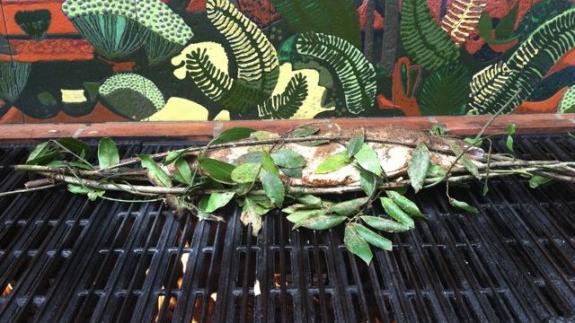
Technique: Grilled Salmon in a Bay Laurel Cage

There’s a backstory to the recipe in the July Sunset for whole salmon with bay, orange, and porcini. John Fink, chef/owner of Bay Area catering company The Whole Beast, first served it to us grilled in a dramatic bay laurel cage. Inspired by Northwest Native American salmon bakes, the cage not only infuses the fish with flavor, it helps keep the skin from sticking, and makes it easy to flip on the grill. And you can make it at home.Fink started with long branches of fresh bay. If you have your own tree, like he does, both the Turkish and California varieties work well. Or, if you live in the San Francisco Area or in Oregon (where California bay is known as myrtle), you can harvest a little in the wild.
You’ll also need some bailing wire (sold at craft stores), wire cutters, and preferably, a charcoal or wood-fired grill. If you use a gas grill, be careful during cooking as the leaves char that they don’t fall into the grill’s inner workings, where they could damage it.
How to make a bay laurel cage for salmon
Step 1: Cut 4 strong bay branches (with side stems) that are a bit longer than the fish. Lay branches 1 and 2 flat, in an oval a bit wider than the fish, and join with wire at point A, with a skinny end meeting a fatter end. Let the side stems just be messy.
Step 2: Lay the fish on its side between branches 1 and 2 with its head at point A. If possible, thread the end of one of the branches through the fish’s mouth to help secure it.
Step 3: Tie branches 1 and 2 with wire at point B. Then wrap the wire several times around point B and the fish’s tail and tie securely; this is your “handle” for turning the fish on the grill.
Step 4: Center branch 3 underneath the fish and branch 4 on top of it. Secure with wire at points A and B.
Step 5: Fold or weave all the side stems across the fish through the branches—no need to secure with wire.
To cook it, follow the recipe for salmon with bay, orange, and porcini, but omit bay leaves in the cavity. Once the salmon is cooked, just snip off the bay cage.



